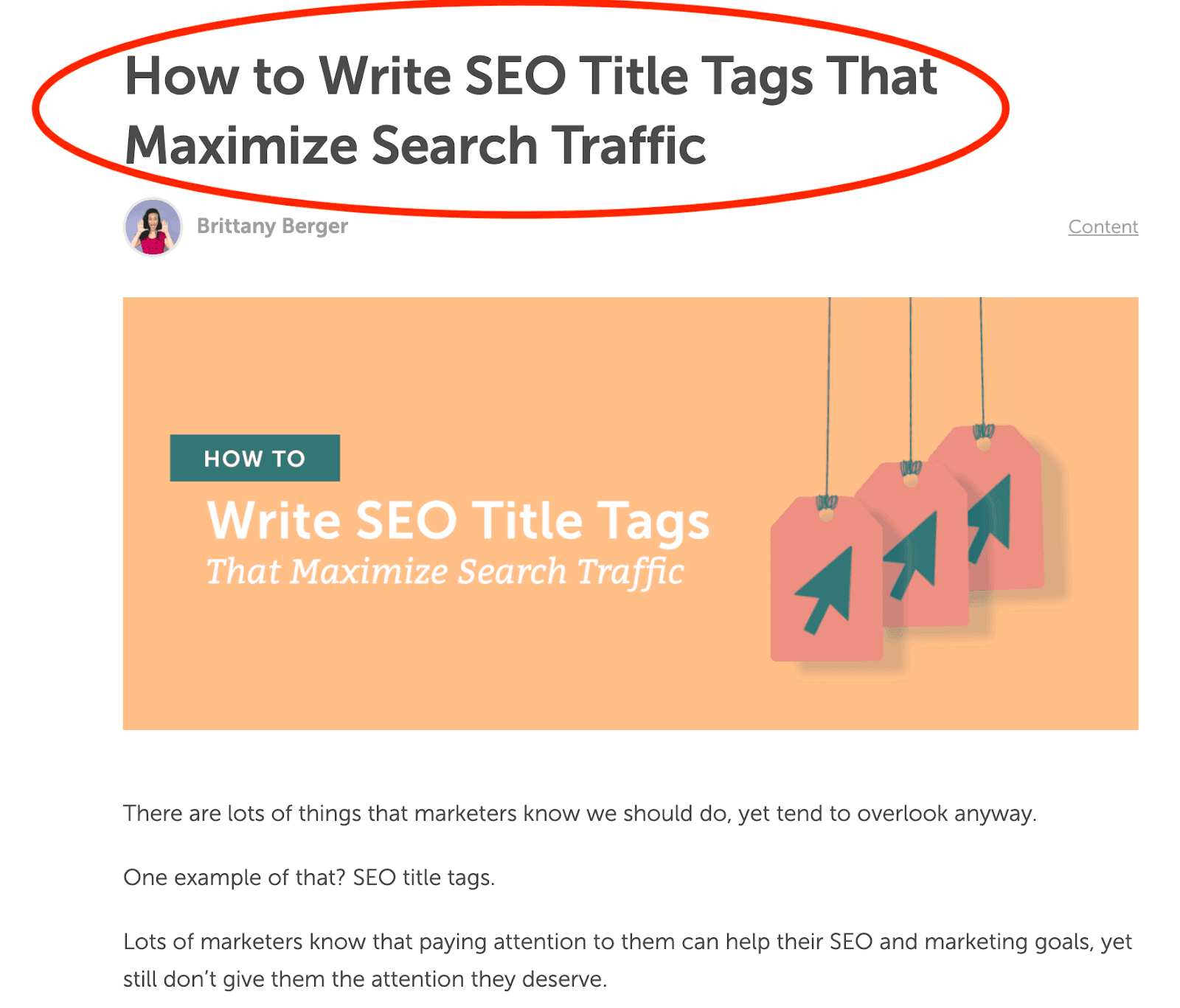SEO best practices are essential to growing an audience, driving sustainable traffic from search engines, and promoting your business or content. One of the main components to practicing great on-page optimization is writing top-notch headlines.
Although they’re supposed to be short, sweet, and to the point, it can be tough to format them in the most effective way possible and cater to a variety of potential readers. That’s where we come in!
Stick around for some helpful tips and resources to making the most out of your web pages with something as simple as an SEO headline.
Learn how to optimize your Google Ads headlines for SEO and improve your ad performance—start crafting yours now!
What’s the Difference Between a Title Tag and an H1, and Why Do They Matter in SEO?
Before we chat about how to craft headlines that are guaranteed to rank highly on search engines, let’s go over a few things.
First of all, let’s break down two different elements that affect SEO headlines:
- H1 (Header 1) tags: These are top-level header HTML tags. On most websites, the headline is coded in an H1 tag.
- Title tags: These are the blue links that appear in search results.
Sites very often use the same text for the H1 and the title tag on an article or blog post. However, it’s important to remember these are two different things that are controlled in two different places on the page.
Our aim here is to write headlines that can easily work as the H1 and the title tag for your article.
Think of them as headlines that serve the purpose of optimizing your search engine ranking and promoting your site.
Recommended:
- SEO Keyword Generator
- YouTube SEO: The Ultimate Guide To Boost Visibility And Rankings
- Catchy Headline Generator
- Craft The Perfect Podcast Script: Tips & Tricks
- Craft Compelling Podcast Names That Engage Listeners
Can You Show Me an Example of a Headline in a Search Result?
When you are searching for a topic on Google (or another search engine), the result pages are filled with millions of title tags related to your searched keyword or keyword phrase. For example, when you type “SEO best practices” in a Google search, this is what your screen might look like:
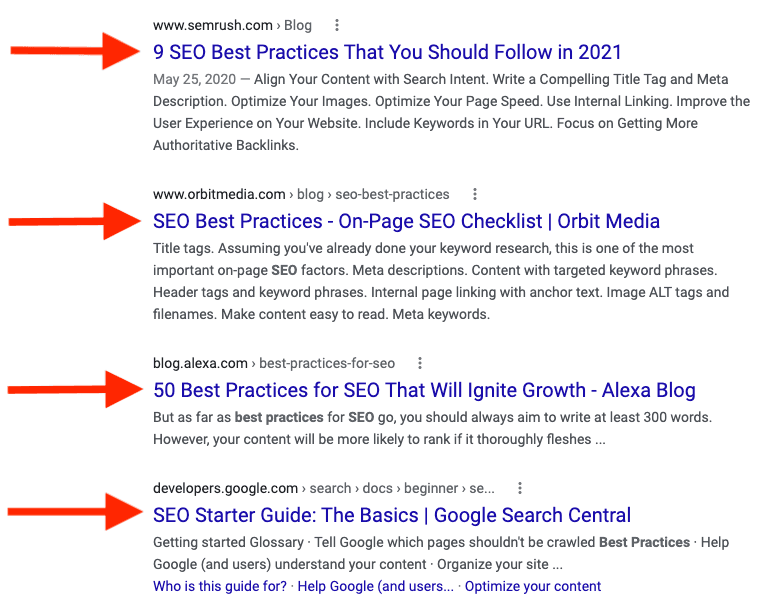
These are examples of title tags that will appear on your SERP.
It’s common for people to mistake a title tag with an H1 — or the HTML tag that is used as the headline of your content. That’s because, more often than not, they are used interchangeably.
Here’s an example of an effective H1:
This H1 is found directly at the top of this CoSchedule blog, and it clearly tells us what sort of information is found within the upcoming content.
While it’s often okay to reuse your H1 as your title tag, sometimes this may present challenges. For example:
- Your headline that appears on your content (H1) might be too long for a title tag.
- It might make sense to place the keyword in the title tag somewhere different than the H1. For example, if your target keyword appears at the end of your headline, you may want to rewrite the headline for your title tag starting with the keyword. This is because search engines consider words furthest to the left in title tags to be most important.
- You need to keep both humans and search engines in mind when writing both your title tag and your H1 (and this can be tough).
While the H1 of your content may contain keywords or formatting that could help your ranking on SERPs, title tags are what get potential readers from their search result pages to your site. If you keyword stuff your SEO headline to help boost your search engine ranking, you’re more than likely to chase away a big fraction of your audience by being too aggressive about your topic.
With these ideas in mind, it’s crucial that you write SEO headlines for your readers AND your search engine of choice.
Think of it as humans and bots living in harmony.
5 Easy Ways to Optimize Your SEO Headlines
Now that you have a solid grasp on the power behind a good SEO headline, let’s introduce some easy tips you can use to effectively produce your own.

Recommended reading:
- 40 Effective YouTube Video Title Ideas To Boost Viewership
- Grow Your Channel With Impressive Youtube Title Copy
Keep Your Character Count in Mind
The visibility of your title tag on search engines is limited to 50–60 characters, so it’s a good idea to utilize an SEO headline that sticks to this limitation. When you keep this character count in mind, you’re also being mindful of your audience and their accessibility to your content.
How does this help you?
Well, not only are you ensuring that search engine users can view the entirety of your topic from their result pages, but you’re demonstrating to readers that you’re aware and taking action toward ease of access; people will appreciate that and develop a trust with your brand/site.
Try out the Moz Title Tag Preview Tool to see how your title tag will appear on Google.
Avoid Keyword Stuffing
Although you may think that including your keyword or keyword phrase in your SEO headline more than once will help improve your ranking on search engines, you’re more than likely to irritate your audience by doing so.
Here’s what I mean:

There’s no need to include “SEO Tips”, the keyword phrase, more than once. It sounds repetitive and pushy.
With such limited visibility of characters for a title tag, do your best to please both the search engine and your readers with your keyword quantity.
Clarity is Key
Another thing to keep in mind when you’re crafting an SEO headline is to make sure it’s as clear and concise as possible. Here are some questions to ask yourself about your headline’s clarity:
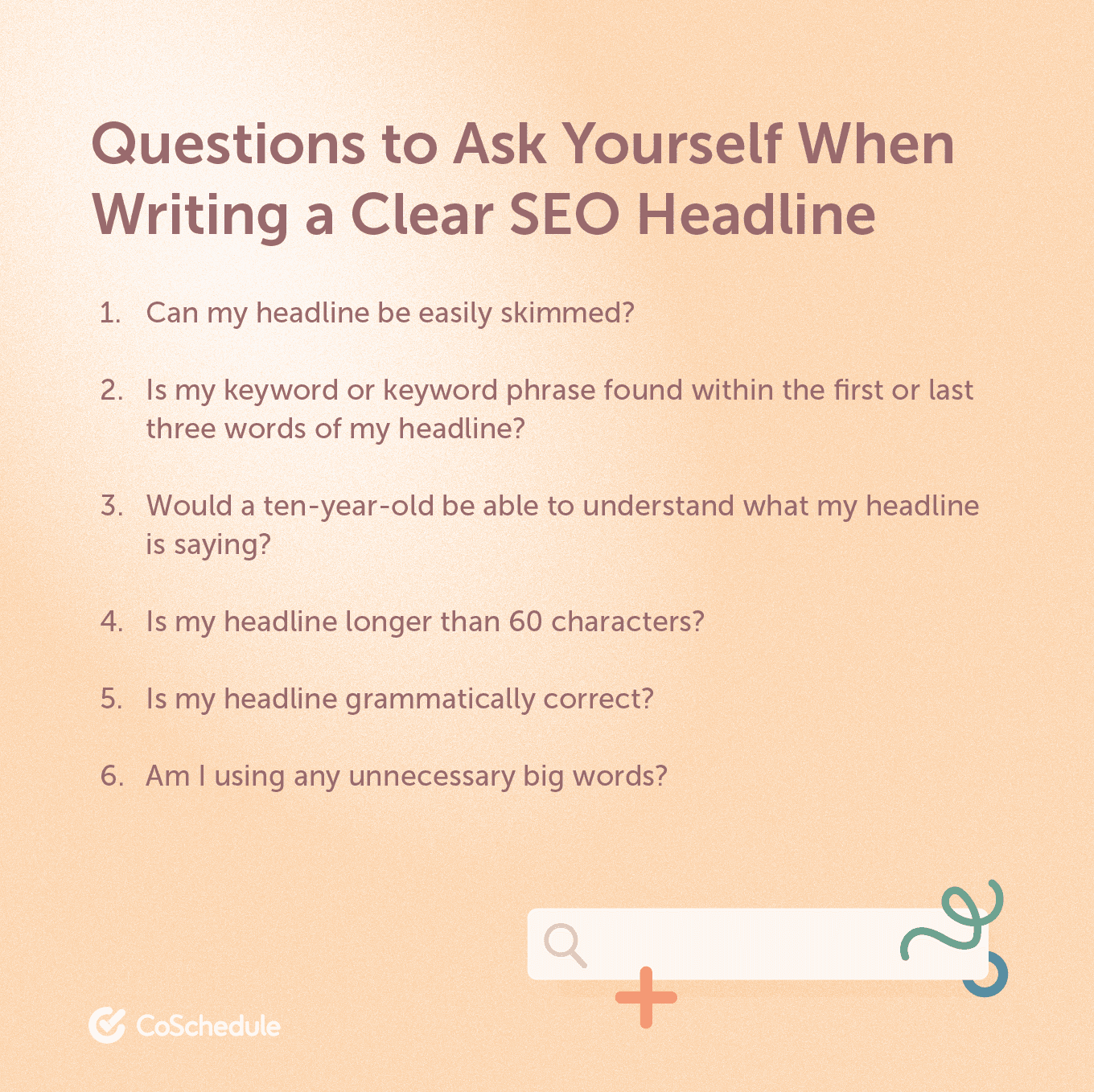
Use these questions as a guideline for determining whether your title tag is clear and “user-friendly” enough for your audience.
Utilize Attention-Grabbing Vocabulary
You don’t have to use large words in your SEO headline to sound impressive or capture the attention of readers. You just have to use words that resonate with them.
Words like:
- Boost
- Easy
- Free
- Important
- Limited
Use the list of words in the downloadable bundle found at the beginning of this post for even more guidance.
Be Consistent
Finally, you need to ensure that your SEO headline matches what you will cover in your content. If you fail to deliver what your title tag promises your readers, you risk losing the trust of potential customers and being referred to as clickbait.
Trust me, that’s not a compliment.
Make things easy on yourself and your readers by not stretching the truth or omitting anything your SEO headline provides to the audience, like this example:

Here’s a straightforward title tag from CopyBlogger. What’s even better is that they actually deliver on what they’ve promised to readers who have stumbled upon this on their SERP:
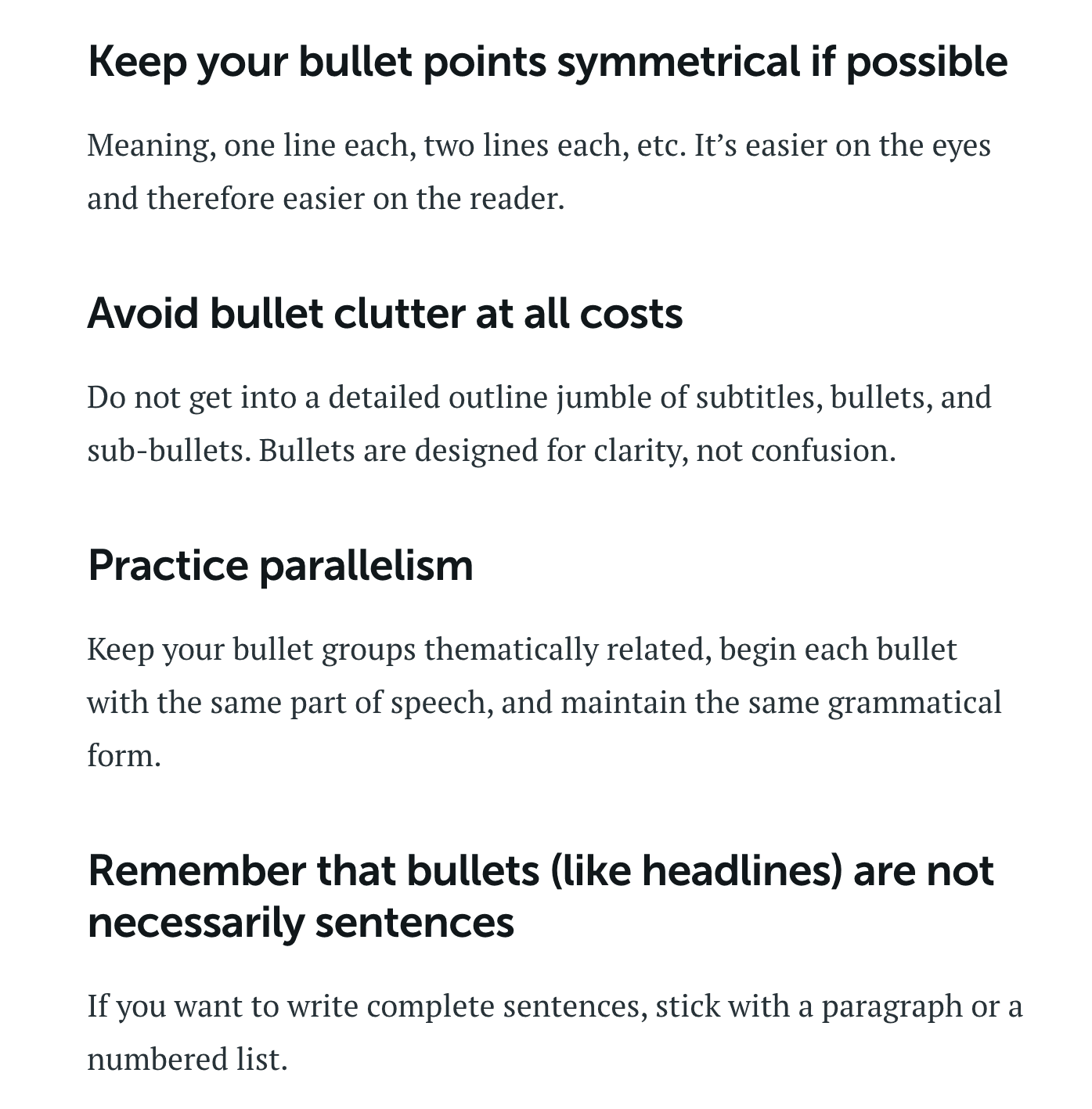
CopyBlogger has truly provided the best of both worlds.
Use CoSchedule’s Headline Analyzer Studio
The Headline Studio tool through CoSchedule is another amazing resource for constructing an effective SEO headline. It’s a premium headline analyzing tool that provides data-driven feedback and resources to help marketers write better headlines and drive maximum traffic.
Simply enter your headline idea:

Click “Analyze”, and Headline Studio will immediately analyze the potential of your headline — using a scoring system out of 100 and offering advice about your word choice, character count, and reading level:
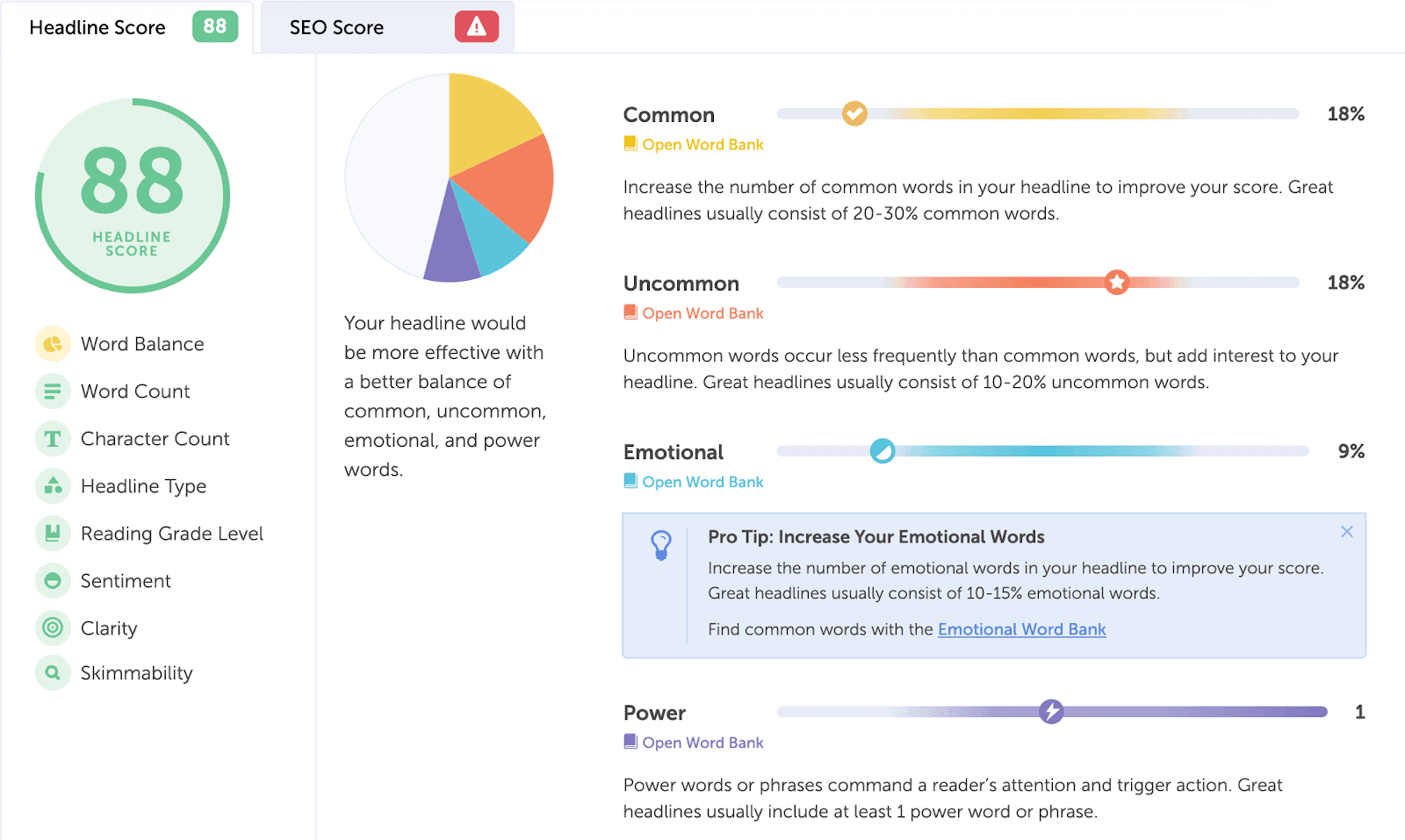
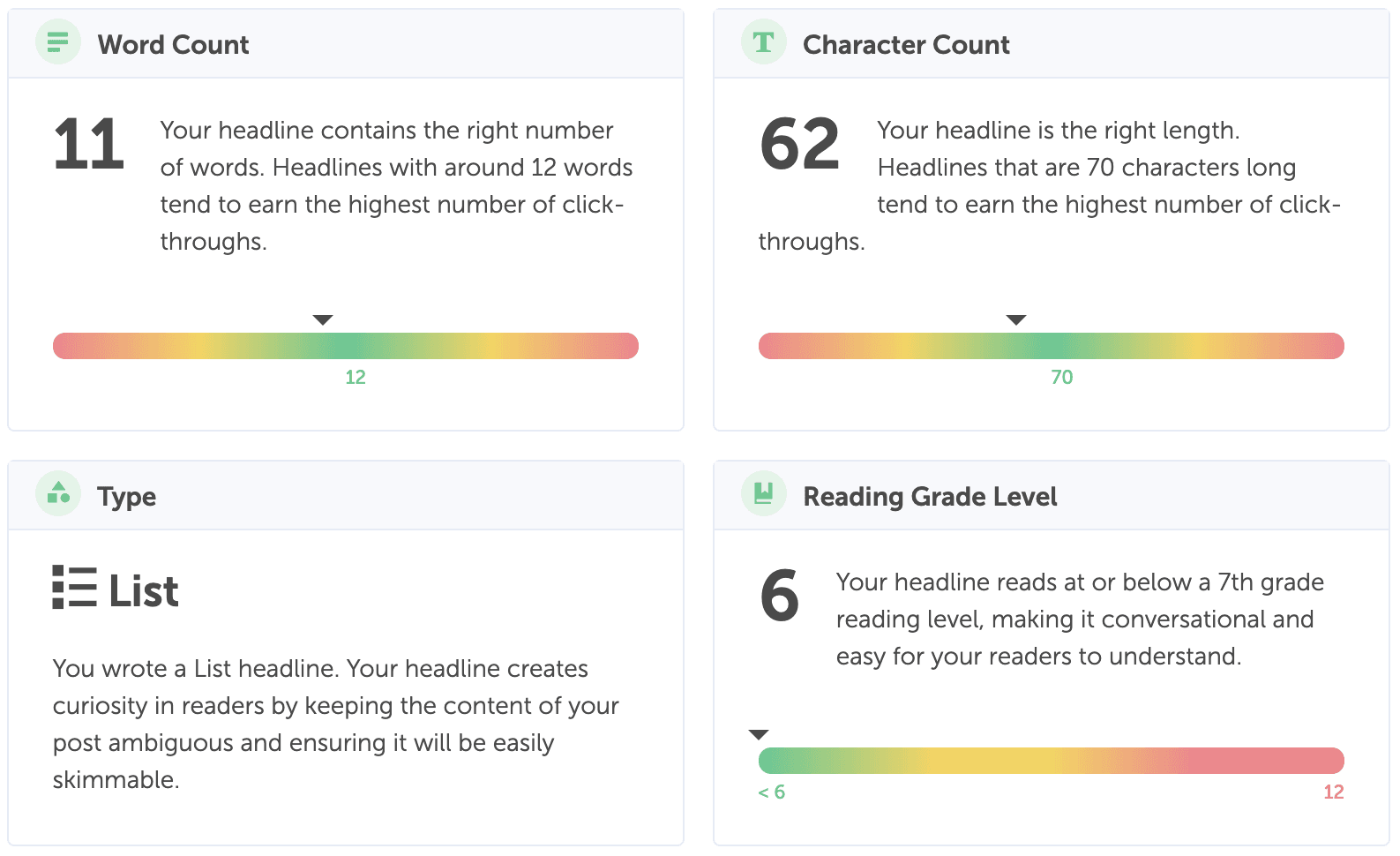
Pretty cool, huh? What are you waiting for? Go check it out!
Go Forth and Be an SEO Master
SEO headlines aren’t a long form of content, but an effective one makes a big difference. Keep these best practices in mind and take advantage of these awesome resources, so you can continue reaping the benefits of powerful SEO methods.
Recommended reading:

